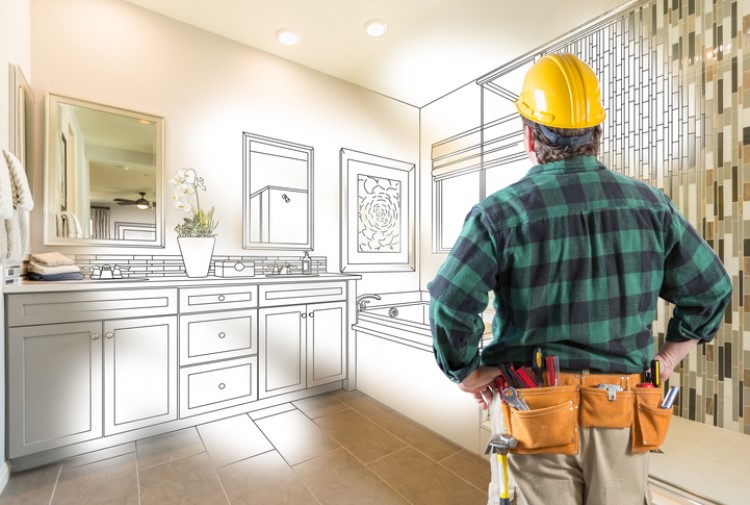In the current climate, where eco-consciousness is on the rise, eco-friendly home renovations have become popular among homeowners. Renovating your home not only improves its aesthetic value and usability but also opens up opportunities to adopt eco-friendly practices that help the planet. As you begin your renovation project, you will find many options and trends that emphasize sustainability while maintaining style and comfort.
Whether you plan to do an extensive remodel or just a few minor updates, understanding the best practices is essential. From selecting eco-friendly materials to employing energy-saving solutions, the decisions you make during your renovation can have a long-term beneficial effect. This guide will delve into topics ranging from affordable remodeling concepts and room-targeted improvements to the newest eco-friendly trends. Prepare to embark on an exciting journey of transforming your living area while caring for the Earth.
Eco-friendly Remodeling Techniques
One of the most effective sustainable remodeling strategies is to prioritize energy-efficient upgrades. Incorporating energy-efficient windows, doors, and insulation during a remodel can greatly reduce your home's energy consumption. These upgrades not only improve comfort but also lower utility bills, offering savings in the long run. Additionally, think about installing eco-friendly appliances and lighting. Look for products that have the ENERGY STAR label, as they are designed to save energy and minimize environmental impact.
Choosing sustainable materials is another key aspect of eco-friendly home remodeling. Opt for reclaimed wood, bamboo, or recycled materials when picking flooring, cabinetry, and countertops. Such resources reduce the demand for new resources and often have a lower environmental footprint. Not only do sustainable materials help the planet, but they also add unique character and charm to your home. Be sure to consult with suppliers who specialize in green building products to ensure you're making informed choices.
Integrating smart home technology can enhance both sustainability and functionality in your remodel. Smart thermostats, lighting controls, and energy monitoring systems enable homeowners to optimize their energy use and reduce waste. Using these technologies, you can create a more efficient living space while also making your home more convenient. Furthermore, considering renewable energy options, such as solar panels, can further enhance your home's sustainability, delivering clean energy to power your appliances and reduce reliance on fossil fuels.
Cost-Effective Renovation Strategies
When considering your property remodel, it’s important to establish a realistic financial plan and adhere to it. Kick off by focusing on which projects are most crucial to you and your household. Focus on areas that provide the best value, for example kitchen and bathroom remodels. Explore finding used materials or gently used decor that can provide character to your home and avoid the high cost.
An helpful way to reduce money is to tackle smaller improvements that make a big impact. Simple updates such as painting walls, changing light fixtures, or replacing cabinet hardware can refresh your environment. Not just, are these changes budget-friendly, but they can also be completed relatively quickly, minimizing disturbance to your regular life.
Should you have some DIY abilities, think about taking on jobs like setting up or demolition yourself. This strategy can reduce labor costs, permitting you to reallocate those funds to better materials. But, be honest about your abilities and be aware when to bring in a professional to ensure the job is done right, preventing expensive mistakes down the road.

Contemporary Trends in Home Design
As we transition into 2024, home design carries on to progress, adopting eco-friendly practices and up-to-date aesthetics that demonstrate personal style while emphasizing sustainability. One key trend is the increase of open floor plans, which not just enhance the flow of natural light but also create multifunctional spaces. Homeowners are progressively preferring layouts that enable seamless transitions between living, dining, and kitchen areas, encouraging a sense of community within the home.
Another important trend is the inclusion of smart home technology. More about the author are looking for innovative ways to increase convenience and energy efficiency. Features such as smart thermostats, advanced lighting systems, and integrated appliances are turning into standard in modern renovations. These upgrades simply add value to the home but also minimize energy consumption, matching with the growing focus on sustainability.
In addition, using sustainable materials has achieved traction, with eco-conscious homeowners seeking out options that are both aesthetic and environmentally friendly. Reclaimed wood, bamboo flooring, and recycled materials are increasingly featured in remodeling projects. This shift not just minimizes the environmental impact but also adds individual character to spaces, demonstrating how modern design can meet the needs of both aesthetics and sustainability.
